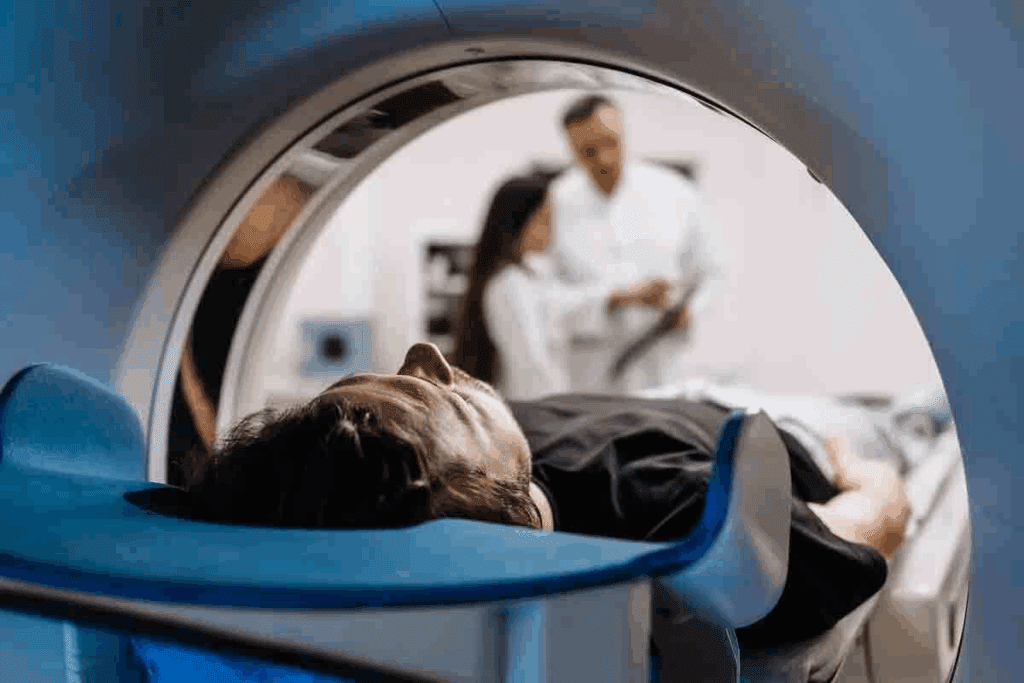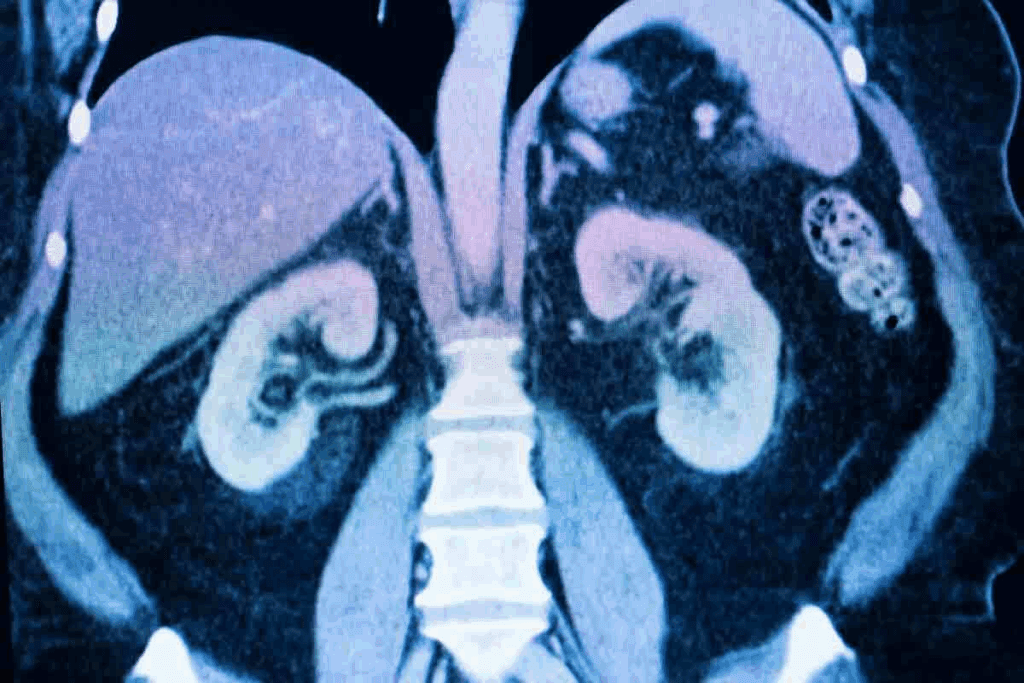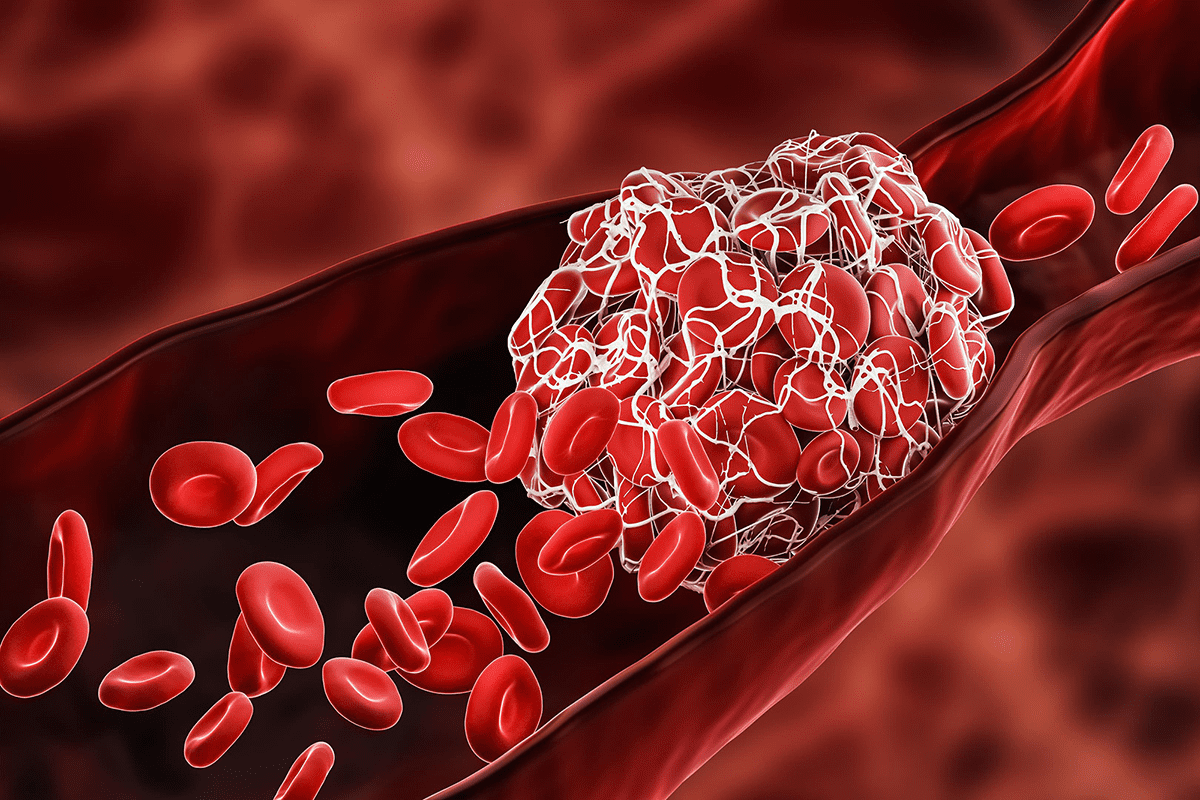Last Updated on November 27, 2025 by Bilal Hasdemir

When preparing for a CT scan of your abdomen or pelvis, your doctor may ask you to consume a CAT scan drink liquid before the procedure. This oral contrast is essential for helping radiologists obtain clear and detailed images, ensuring an accurate diagnosis.
At Liv Hospital, we prioritize patient care and clear communication. By combining internationally recognized protocols with a patient-centered approach, we ensure you receive the highest standard of care.
The CAT scan drink liquid is swallowed prior to the scan to help differentiate the digestive tract from surrounding organs and tissues. This improves the accuracy of the images, allowing our medical team to provide a precise diagnosis and an effective treatment plan tailored to your needs.
Key Takeaways
- Oral contrast is a special liquid consumed before a CT scan to enhance diagnostic accuracy.
- The contrast drink helps radiologists distinguish the digestive tract from surrounding organs and tissues.
- At Liv Hospital, we prioritize patient-centered care and internationally recognized protocols.
- Clear images obtained through the CT scan enable our medical team to provide a precise diagnosis and effective treatment plan.
- Our team is committed to delivering world-class healthcare with comprehensive international patient support and guidance.
The Purpose of Oral Contrast in CT Imaging
Oral contrast plays a crucial role in CT imaging by enhancing the visibility of the digestive tract. When preparing for a CT scan, patients are often required to consume a contrast drink that contains specific agents to highlight the gastrointestinal system. This contrast agent is crucial for diagnostic accuracy, as it allows radiologists to distinguish between various structures within the abdominal cavity.
How Contrast Enhances Diagnostic Accuracy
The primary function of oral contrast is to improve the diagnostic quality of CT images. By consuming a contrast drink, patients help doctors identify abnormalities in the digestive tract more effectively. The contrast agent works by temporarily ‘highlighting’ the stomach and intestines on the CT images, making it easier to detect issues such as inflammation, tumors, or other pathologies.
The benefits of using oral contrast include:
- Enhanced visualization of the gastrointestinal tract
- Improved detection of abnormalities and diseases
- Better differentiation between the digestive tract and surrounding tissues
Distinguishing Digestive Tract from Surrounding Tissues
One of the key challenges in abdominal CT imaging is distinguishing the digestive tract from adjacent structures. Oral contrast helps address this issue by providing a clear contrast between the lumen of the bowel and the surrounding tissues. This is particularly important when diagnosing conditions that affect the gastrointestinal system.
The most commonly used oral contrast agents are barium-based solutions and iodine-based solutions. These agents are designed to be safe for consumption and effectively highlight the digestive tract during the CT scan.
By understanding the purpose and benefits of oral contrast, patients can better prepare for their CT scans and appreciate the importance of this diagnostic tool in medical imaging.
Types of CT Scan Drink Liquid Used in Medical Imaging
To enhance the diagnostic accuracy of CT scans, healthcare providers use different oral contrast liquids, including barium-based and iodine-based solutions. These contrast agents play a crucial role in highlighting the digestive tract and surrounding tissues during the imaging process.
Barium-Based Solutions
Barium-based solutions are a common type of oral contrast used for CT scans. These solutions are known for their thick and chalky texture, which can sometimes be unpleasant for patients. However, they are effective in coating the digestive tract and providing clear images of the area of interest. Barium-based contrast agents are particularly useful for imaging the upper gastrointestinal tract.
Iodine-Based Solutions
Iodine-based solutions, such as Gastrografin, are another type of oral contrast agent used in CT scans. These solutions are known for their bitter taste, which can be challenging for some patients to consume. However, iodine-based contrast agents are effective in enhancing the visibility of the digestive tract and are often used for abdominal and pelvic CT scans.
Both barium-based and iodine-based solutions have their advantages and are chosen based on the specific requirements of the CT scan and the patient’s condition. Understanding the characteristics of each type of contrast agent helps healthcare providers select the most appropriate option for optimal imaging results.
How Oral Contrast Works in Your Body
When you drink contrast for a CT scan, it’s essential to understand how oral contrast works within your body to enhance the imaging process. Oral contrast agents are designed to highlight the digestive system, making it easier to detect abnormalities during the scan.
Temporary Highlighting of Digestive Organs
Oral contrast temporarily illuminates the stomach and intestines, allowing for clearer visualization of these organs. This temporary highlighting is crucial for diagnosing issues within the digestive tract, as it provides a stark contrast between the organs and any potential abnormalities.
Absorption and Distribution Through the GI Tract
As you consume the oral contrast, it travels through your GI tract, coating the walls of your digestive organs. The contrast agent is not absorbed into the bloodstream but rather moves through the gastrointestinal system, providing a clear outline of the digestive tract’s anatomy.
Duration of Contrast Visibility in Imaging
The visibility of the oral contrast in imaging depends on several factors, including the type of contrast used and the individual’s digestive system. Generally, the contrast remains visible during the CT scan and may take some time to pass through the system afterward.
As stated by medical professionals, “The use of oral contrast in CT scans significantly enhances the diagnostic accuracy by providing a clear visualization of the digestive organs.” This highlights the importance of understanding how oral contrast works in your body.
When Doctors Prescribe Contrast for CT Scans
The decision to use oral contrast for a CT scan depends on several factors, including the type of examination and the patient’s medical condition. We prescribe contrast drinks to enhance the diagnostic accuracy of CT scans, particularly for abdominal and pelvic imaging.
Abdominal Imaging Requirements
For abdominal CT scans, oral contrast is often necessary to distinguish between different structures within the abdominal cavity. “Oral contrast helps to delineate the bowel and other abdominal organs, making it easier to identify abnormalities,” says a radiologist with over 10 years of experience. Drinking the full amount of contrast within the specified timeframe is crucial for optimal bowel distention and diagnostic accuracy.
Pelvic CT Scan Protocols
Pelvic CT scans also frequently require oral contrast to visualize the pelvic organs effectively. The contrast agent helps to differentiate between the bladder, rectum, and other pelvic structures, which is essential for diagnosing conditions such as tumors or inflammatory diseases.
Specific Medical Conditions Requiring Contrast
Certain medical conditions necessitate the use of oral contrast for a CT scan. These include suspected bowel obstruction, inflammatory bowel disease, and certain types of tumors. By highlighting these areas, contrast agents enable healthcare providers to make more accurate diagnoses and develop effective treatment plans.
We emphasize the importance of following the prescribed protocol for consuming oral contrast to ensure the best possible imaging results. By doing so, patients can help their healthcare team obtain the diagnostic information needed to provide appropriate care.
The Administration Process: Drinking Contrast Before Your Scan
Understanding the process of drinking contrast before a CT scan is crucial for optimal imaging results. We guide our patients through this process to ensure they are well-prepared for their scan.
Optimal Timing (1-2 Hours Before Procedure)
The timing of drinking contrast liquid is critical for effective bowel distention. Typically, patients are required to drink the contrast 1-2 hours before the CT scan procedure. This allows the contrast to distribute evenly throughout the digestive tract, providing clear images during the scan.
“The optimal timing for drinking contrast varies depending on the specific requirements of the scan and the patient’s condition,” says a radiologist with over 10 years of experience. “Generally, we instruct patients to start drinking the contrast liquid about 1-2 hours before the scan to achieve the best results.”
Required Volumes for Effective Bowel Distention
The volume of contrast liquid required can vary based on the type of CT scan and the patient’s anatomy. Generally, patients are asked to drink a specific amount to achieve adequate bowel distention, which is crucial for clear imaging. Our medical team provides detailed instructions on the required volume to ensure patients are adequately prepared.
Consumption Guidelines for Best Results
To achieve the best results from the CT scan, patients must follow specific consumption guidelines. This includes drinking the contrast liquid at a steady pace over the recommended period and avoiding certain foods or drinks that could interfere with the scan. Our healthcare professionals provide personalized guidance to ensure patients understand and follow these guidelines effectively.
By following these guidelines and understanding the administration process, patients can help ensure that their CT scan produces high-quality images, leading to more accurate diagnoses and effective treatment plans.
What Does Oral Contrast Taste Like?
The flavor of oral contrast can vary significantly depending on the type used, which is a crucial piece of information for patients. Understanding the taste profiles of different contrast agents can help alleviate anxiety and prepare patients for their CT scan procedure.
Flavor Profiles of Different Contrast Agents
Oral contrast agents come in different formulations, primarily barium-based and iodine-based solutions. Barium-based solutions are often described as thick and chalky, while iodine-based solutions can have a bitter taste. The distinct characteristics of these agents can affect patient compliance.

Patient Experiences and Descriptions
Patients’ experiences with the taste of oral contrast vary widely. Some common descriptions include:
- Unpleasant or bitter
- Chalky or metallic
- Similar to a strong medicine
These descriptions highlight the diverse reactions patients may have to the taste of oral contrast.
Tips for Managing Unpleasant Tastes
To make consuming oral contrast more manageable, patients can try the following tips:
- Chill the contrast agent before consumption to reduce its taste.
- Use a straw to minimize contact with the taste buds.
- Rinse your mouth with water or a flavored drink after consumption.
By employing these strategies, patients can make the process of consuming oral contrast less unpleasant.
Potential Side Effects of Contrast Drinks
As we guide you through the process of CT scans, let’s discuss the possible side effects of contrast drinks. While oral contrast agents are generally safe, some patients may experience adverse reactions.
Common Digestive Reactions
Some individuals may encounter digestive issues after consuming contrast drinks. Common reactions include:
- Nausea or vomiting
- Diarrhea or constipation
- Abdominal cramps or discomfort
These symptoms are usually temporary and resolve on their own.
How Long Does Readi-Cat 2 Stay in Your System?
Readi-Cat 2, a commonly used barium-based contrast agent, is typically eliminated from the body within a few days. Most patients can expect to return to their normal bowel habits within 24 to 48 hours.
Managing Post-Procedure Discomfort
To alleviate any discomfort after your CT scan, we recommend:
- Staying hydrated by drinking plenty of fluids
- Eating light, easily digestible meals
- Avoiding heavy meals or strenuous activities for a few hours
If you experience persistent or severe symptoms, it’s essential to contact your healthcare provider for guidance.
Special Patient Considerations for Contrast Administration
Contrast administration protocols must be adapted for different patient populations to ensure safety and efficacy. This is particularly important for patients who may require special care due to their age, health condition, or other factors.
Pediatric Protocols
When it comes to pediatric patients, the dosage and type of contrast agent must be carefully calculated based on the child’s weight and age. According to recent studies, the use of contrast agents in pediatric patients requires careful consideration of their renal function and overall health status https://pmc.ncbi.nlm.nih.gov/articles/PMC11300474/.
Elderly Patient Accommodations
Elderly patients often have comorbidities that may affect contrast administration, such as renal impairment or diabetes. Therefore, their overall health status and medication regimen must be evaluated before the CT scan.
Patients with Swallowing Difficulties
For patients with swallowing difficulties, alternative methods of contrast administration may be necessary. This could include the use of a feeding tube or adjusting the consistency of the contrast agent.
Diabetic Patient Considerations
Diabetic patients, especially those taking metformin, require special consideration due to the risk of lactic acidosis. Their renal function should be assessed before administering contrast, and their medication regimen may need to be adjusted.
Modern Alternatives to Traditional Contrast Agents
As medical imaging technology advances, we’re seeing a shift towards modern alternatives to traditional contrast agents used in CT scans. Recent research suggests that neutral options like water are increasingly used, especially with advanced CT technology.

Water as a Neutral Contrast Medium
Water is emerging as a viable alternative to traditional contrast agents, particularly for certain types of CT scans. Its neutral density can help distend the gastrointestinal tract without the potential side effects associated with traditional contrast agents.
Low-Volume Contrast Options
Low-volume contrast options are another modern alternative, designed to reduce the amount of contrast material patients need to consume while maintaining diagnostic image quality. These options are particularly beneficial for patients who have difficulty ingesting large volumes of contrast.
Advanced CT Technology and Reduced Contrast Needs
The development of advanced CT technology has played a significant role in reducing the need for traditional contrast agents. Modern CT scanners offer higher resolution images and faster scanning times, often allowing for the use of alternative contrast methods or reduced volumes of traditional agents.
These modern alternatives are enhancing patient comfort and diagnostic outcomes, marking a significant step forward in CT imaging.
Preparing for Your CT Scan with Oral Contrast
When preparing for a CT scan with oral contrast, it’s essential to understand the steps involved to ensure a smooth and successful procedure. We guide you through the necessary preparations to help you feel more comfortable and informed throughout the process.
Pre-Scan Dietary Restrictions
Before your CT scan, you may be required to follow specific dietary restrictions. Typically, patients are advised to avoid eating or drinking for a certain period before the procedure. This helps ensure that the oral contrast is effective in highlighting the digestive tract during the scan. It’s crucial to follow the instructions provided by your healthcare provider regarding any dietary limitations.
Hydration Guidelines
Staying hydrated is important, but you should follow the hydration guidelines provided by your healthcare team. Proper hydration can help the oral contrast move through your digestive system effectively. However, be sure to drink only the recommended amount of water or other approved liquids before your scan.
What to Bring to Your Appointment
On the day of your CT scan, remember to bring any relevant medical records, insurance information, and a list of your current medications. It’s also a good idea to bring a friend or family member for support. Wear comfortable clothing and avoid wearing jewelry or clothing with metal parts that could interfere with the scan.
Post-Scan Recovery Expectations
After your CT scan with oral contrast, you can generally resume your normal activities unless instructed otherwise by your healthcare provider. The oral contrast will pass through your system naturally, and any discomfort should be minimal and temporary. If you experience any unusual symptoms, be sure to contact your healthcare team for guidance.
By following these guidelines, you can help ensure that your CT scan with oral contrast is conducted efficiently and effectively, providing the best possible diagnostic results.
Comparing Oral Contrast with Other CT Contrast Methods
When it comes to CT scans, oral contrast is just one of several contrast methods used to enhance diagnostic accuracy. We use various contrast agents to visualize different parts of the body, and each method has its specific applications.
Intravenous Contrast Agents
Intravenous contrast agents are administered through a vein and are used to visualize blood vessels, organs, and other structures that are not easily seen without contrast. This method is particularly useful for imaging the vascular system and certain types of tumors.
Rectal Contrast Administration
Rectal contrast involves introducing contrast material directly into the rectum to help visualize the lower gastrointestinal tract. This method is often used for detailed imaging of the rectum and sigmoid colon.
When Multiple Contrast Types Are Used Together
In some cases, we use multiple contrast types together to get a more comprehensive view of the body’s internal structures. For example, combining oral and intravenous contrast can help in diagnosing complex abdominal conditions by providing a detailed view of both the digestive tract and the surrounding tissues and organs.
Conclusion: Ensuring the Best Imaging Results
Understanding the role of oral contrast in CT scans is crucial for achieving accurate diagnostic results. Throughout this article, we have explored the various aspects of contrast drinks used in medical imaging, from their purpose and types to their administration and potential side effects.
By summarizing the key points, we emphasize the importance of oral contrast in enhancing diagnostic accuracy. The use of contrast agents allows for better visualization of the digestive tract and surrounding tissues, leading to more precise diagnoses and effective treatment plans.
At our institution, we are committed to providing world-class healthcare delivery with comprehensive international patient support and guidance. Ensuring the best imaging results is at the forefront of our mission, and we strive to achieve this by utilizing the latest advancements in medical imaging technology and protocols.
In conclusion, the effective use of oral contrast in CT scans is a critical component of achieving the best imaging results. By understanding its role and significance, patients and healthcare professionals can work together to obtain accurate diagnoses and develop effective treatment strategies.
FAQ
What is oral contrast, and why is it used in CT scans?
Oral contrast is a liquid consumed before a CT scan to help distinguish the digestive tract from surrounding organs and tissues, enhancing diagnostic accuracy.
What are the types of oral contrast agents used in medical imaging?
The most commonly used oral contrast agents are barium-based solutions and iodine-based solutions, such as Gastrografin.
How long does it take to drink the contrast liquid before a CT scan?
Patients are typically required to drink the contrast liquid 1-2 hours before the scan to ensure optimal bowel distention and diagnostic accuracy.
What does oral contrast taste like?
Barium-based solutions are often described as thick and chalky, while iodine-based solutions like Gastrografin are known for their bitter taste.
Are there any potential side effects of drinking contrast liquid for a CT scan?
Some patients may experience digestive reactions, such as nausea or diarrhea, after consuming oral contrast.
How long does Readi-Cat 2 stay in your system?
The duration of Readi-Cat 2 in the system varies, but it is generally eliminated from the body within a few hours to a few days after consumption.
Can patients with swallowing difficulties consume oral contrast?
Special considerations and accommodations are made for patients with swallowing difficulties, and alternative methods may be used to administer the contrast.
Are there any dietary restrictions before a CT scan with oral contrast?
Patients are often required to follow specific dietary restrictions before a CT scan with oral contrast to ensure optimal imaging results.
Can diabetic patients consume oral contrast?
Diabetic patients should inform their healthcare provider before consuming oral contrast, as some contrast agents may contain sugar or other ingredients that require special consideration.
What are the modern alternatives to traditional oral contrast agents?
Recent research suggests that neutral options like water are increasingly used, especially with advanced CT technology, as alternatives to traditional oral contrast agents.
How does oral contrast compare to other CT contrast methods?
Oral contrast is one of several contrast methods used in CT scans, and it is often used in conjunction with other methods, such as intravenous or rectal contrast administration.
References:
- Guimarães, M. T., Sahani, D. V., & Hahn, P. F. (2015). Role of oral contrast in abdominal CT. Radiologic Clinics of North America, 53(2), 231-259. https://pubmed.ncbi.nlm.nih.gov/25616881/
- Paulson, E. K., & Thompson, W. M. (2016). Oral contrast agents in abdominal CT: when and how to use them. Radiologic Clinics of North America, 54(3), 471-485. https://pubmed.ncbi.nlm.nih.gov/26825611/
- Gurney-Champion, O. J., & Nakhoon, J. (2021). Gastrointestinal tract imaging using oral contrast media in abdominopelvic CT. Insights into Imaging, 12(1), 136. https://pubmed.ncbi.nlm.nih.gov/33762693/






